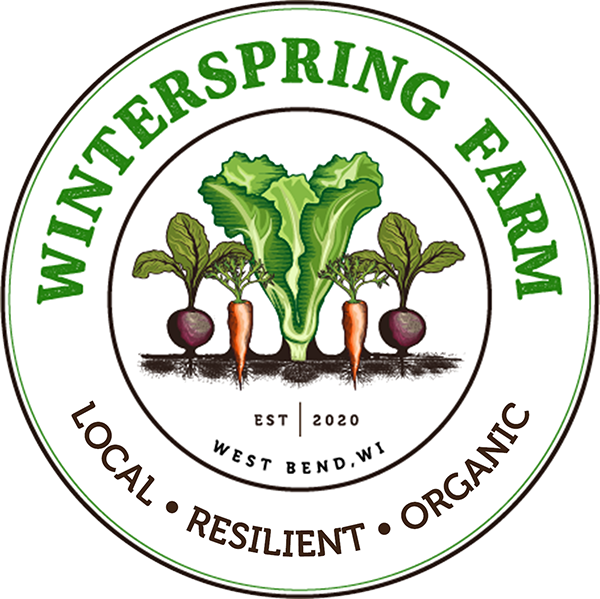Kale
Culinary Use, Storage, & Benefits
Winterbor variety of curly kale
Vegetable Profile: Kale (Brassica Oleracea acephala)
Description
Kale is the grandmother of Brassicas, as it is the predecessor of other crops bred from it like cabbage, cauliflower, broccoli and more. It is a hardy non-heading green that is a reliable producer on our farm. It's enjoyed a wave of popularity over the past two decades, and for good reason – it packs a lot of nutritional punch for an easy-to-grow, long-season vegetable! It comes in many varieties, from hefty curly kale, to slender and tender Lacinato, to red and white Russian and even scarlet kale! So important in traditional Scottish diets, they have an old saying: to be “off one's kale”, meaning too sick to eat.
Nutrition
Kale is warming when fresh, and sports a sweet nuttiness with notes of bitter and pungent flavor. It contains nutraceuticals lutein and zeaxanthin, which supports eyesight. It is an exceptional source of chlorophyll, beta-carotene, calcium, and vitamins E, K, and B. Rich in folate, this food is important for expectant mothers or those in their childbearing years. Medicinally, Brassicas contain varying amounts of sulfur glycosides, which is what makes many species taste “spicy”. These glycosides have a stimulating affect on digestion, but if taken too much, can cause heartburn. The spicier it is, the more moderation is required. While small amounts of raw kale can benefit sluggish digestion, larger amounts of cooked kale should be prepared with a generous amount of fat. Many of the nutrients in kale are fat-soluble. A pot of greens, soups and stews, and egg frittatas are great examples.
Storage
Kale stores best in the fridge or freezer in a water-tight container. Use or freeze within 1 week. Blanch for higher quality frozen kale.
Kale growing in the north field
Use
Cooked: To get the most of these fat soluble nutrients, cook your kale in a heat stable fat like butter, rendered fat, coconut oil, or sunflower oil. We like to first steam it in a small amount of water until it's tender, then add the fat, garlic or other seasonings, soy sauce, and serve.
Raw: Feed and diversify your gut bacteria with raw massaged kale salads. Rich in vitamin C.
Frozen: Kale is one crop we freeze every year. For best results, blanch in hot water and then cool in an ice water bath before freezing. However, if that’s too much trouble, just place it in a freezer bag, de-stemmed and chopped up raw. You can remove it in chunks that easily break off and toss into whatever you're cooking as needed.
Dried: Kale chips are a fun and delicious snack for on-the-go. Mix and match your favorite seasonings, and use a dehydrator or an oven at low heat.
Sources:
SpecialtyProduce.com
The New Whole Foods Encyclopedia by Rebecca Wood
Asparagus to Zucchini by Fairshare Coalition
Produce: A fruit and vegetable lover's guide by Bruce Beck
BOTANY IN A DAY by Thomas J. Elpel
Our own experience!






